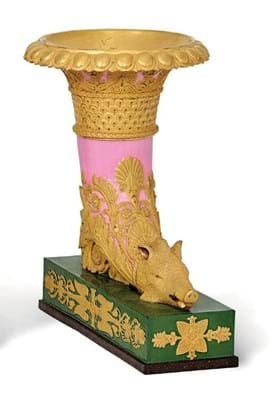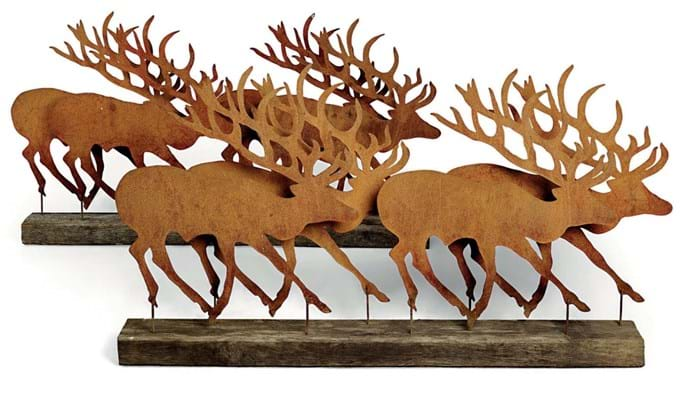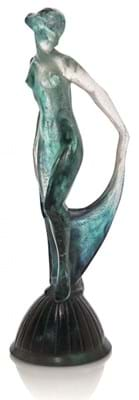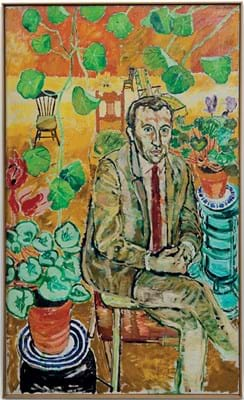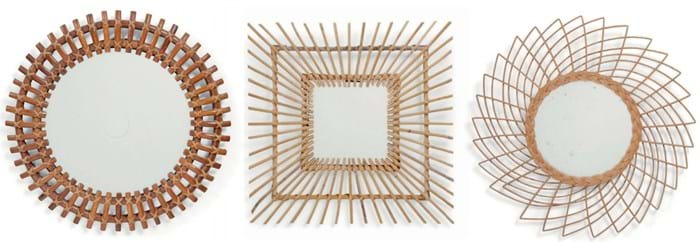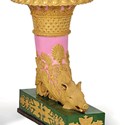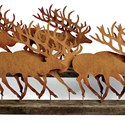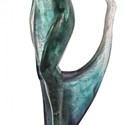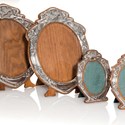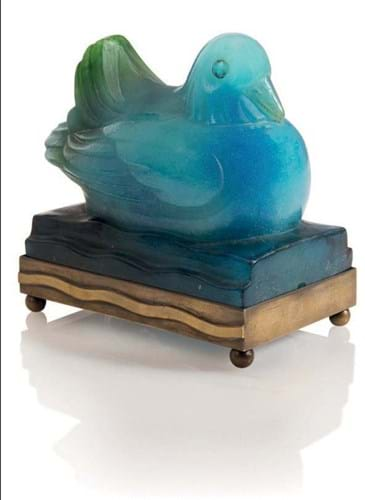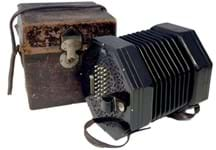And that was pretty much it. After 42 years, and a few saleroom notices alerting potential buyers of the need to collect before the doors finally closed on July 29, the last-ever sale at CSK was under way.
With no respect for the occasion, the first lot of the day – a 3ft (90cm) high bourgogne marble wall fountain – only just squeaked away. Porter, who began his career at CSK before becoming head of the Modern British picture department at King Street, was relieved to take a solitary bid of £1100 (estimate £1500-2000). “Phew. It’s not going to BI,” he quipped.
It was fitting that an interiors sale was closing out the CSK story.
The occasionally derided format may lack the romance of the single-owner sale or the media-friendly credentials of a record-breaking Dinky toy.
However, the innovative ‘how it might look in your own home’ format has proved just as much part of the Noughties saleroom zeitgeist as micro-market sales of Clarice Cliff and mechanical music were in previous decades.
Global reach
Timing aside, in many ways this was the typical modern-day CSK sale – a small audience of decorators and private buyers outweighed by phone and online bidding from a global client list.
“Tenacious clicking. We are rooting for you in Panama,” said Nick Martineau as a portrait of a coquettish Ludvig II of Bavaria crept towards £2200. “Keep going Qatar – it’s as good as catching the real thing,” as a huge Lego model of a sailfish took £2600. One of the firm’s most accomplished auctioneers, Martineau has done 27 years at CSK.
The content was largely regulation: post-war Lalique, 19th century Meissen, recently framed sets of Georgian prints, Edwardian silver photo frames, plaster reliefs ‘after the antique’ and apartment-ready 19th and 20th century furniture.
Nothing too academic. Not much to frighten the horses – with the exception perhaps of a huge 1996 gloss-paint on canvas by American contemporary artist Sarah Morris (b.1967).
Acquired by the vendor from dealer Jay Joplin, the 8ft (2.44m) rendering of the word Shit – “just about says it all,” said Martineau – sold on the phone at £4200.
Interiors sales also have a habit of occasionally underlining Christie’s ability to reach the international clientele other auctioneers can’t.
It’s why this saleroom – once the preserve of trade buyers – had become such a favourite with trade consignors. A group of 10 mid-to-late 20th century cane mirrors of various shapes and sizes would leave most auctioneers sweating at an estimate of £2000-3000. Here two bidders were keen to pursue them to £4500.
There were moments too of competition for real quality.
A pair of 11in (28cm) high Paris porcelain pink and green ground rhyton vases c.1815 carried the iron-red stencilled mark Darte Freres a Paris – the rue de la Roquette factory that occasionally rivals Sèvres for quality. These sold to an absentee bidder for £8500 (estimate £3000-5000) against an online bidder from Kiev.
Single-owner familiarities
Small pockets of the sort of single-owner material for which the saleroom was once well-known also appeared. French art glass was a CSK sale category of its own in the boom years of the 1980s.
Head of sale Anne Evans had taken to the rostrum “for the final time at this very special place” to sell a group of Nancy pate-de-verre. A rare 10in (25cm) figure Baigneuse by Marcel-Andre Bouraine (1886- 1948) and Gabriel Argy-Rousseau (1885-1953) sold on the book against a bidder in Monaco for £17,000 (estimate £12,000-15,000). From a model designed in 1928, it was signed in the mould M. Bouraine, A13, Pate-de- Cristal, Argy-Rousseau.
A series of figural wares by Almeric Walter (1870-1936) also impressed. Canard, a 7in (18cm) nightlight with brass base and fittings, trebled its mid estimate at £12,000, while Poisson in the same olive to turquoise paste on an ebonised wood base took £6500.
These were followed by both a dozen lots of Georgian glass, from the Sir Francis Cook collection formerly in Doughty House on Richmond Hill, and a group of English creamware jugs and mugs that once formed part of the expansive collection of English pottery formed through the dealer Louis Gautier by Cecil Baring (1864- 1934) of banking fame.
Both textbook provenances. Both old-school collections generated almost no interest.
It was evidence – if the occasion was not enough – that across four decades the collecting market has changed almost beyond recognition.
But by this point of the afternoon the drinks were on ice, the selfies were being taken and outgoing chairman Nic McElhatton had entered to merriment in James Christie-style frock coat and tricorn hat.
An audience of past and present staff, well-wishers – and, yes, the odd journalist – had built steadily until, in the words of dealer Peter Petrou, there was “barely room for a Rizla paper between the standing crowd”.
Whole-hearted
The final two lots in the sale – a set of 12 mid-20th century mahogany armchairs to a John Linnell model and a later Georgian style three-pillar dining table with two extra leaves came with a catalogue addendum of the type with which buyers have become increasingly familiar. “From time to time, Christie’s may offer a lot which it owns in whole or in part. This is such a lot.”
In this case, however, there was nothing in the way of guarantees or irrevocable bids. The provenance for these was the CSK boardroom, with both lots sold to benefit West London Action for Children.
Following his emotion-laden speech, McElhatton was cheered to the rafters as the chairs sold for £9000 and the table £2000.


